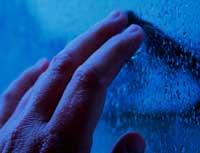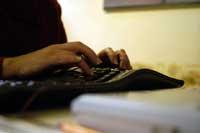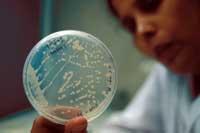Hand bacteria like fingerprints

Because our genome is not the only thing that makes us unique or unique. The same group of bacterial genes that pass to each surface we touch through our fingers, such as the computer keyboard, also leaves a mark and can be used for forensic purposes.
As researchers at the University of Colorado have explained, our bodies are covered with bacteria and we leave their mark on everyday life. They already knew that in the hands we have many types of microbes. But this time the main novelty is that these differences between microbes can be used to know who has touched a particular object or surface. That is why, among other things, if a crime is to be solved, the information obtained on this path could be of great importance. In the journal Proceedings of the National Academy of Sciences he has realized what was discussed.

Outdated forecasts
The new technique, based on genetic sequencing, presents accuracy between 70% and 90%. However, today it is in the preliminary phase, a percentage that will probably increase when they succeed in perfecting the method. “It can undoubtedly become a valuable element in the toolbox of forensic scientists,” said one of the researchers.
To reach this conclusion, American researchers took DNA samples of bacteria from mice and keyboards of three personal computers. They first compared them to the bacteria in the hands of the object owners and then compared them to samples taken from other keyboards they never used. The similarity between individuals and bacteria in their personal computers was much greater.
The test worked 12 hours after the last use of computers. And the scientists at the University of Colorado wanted to go further. Samples were taken from the surfaces of two people and one of them froze below zero to 20 degrees, leaving the other sample at room temperature for fifteen days. What happened? Because the bacterial colonies did not undergo any change, in either case.
This resistance shown in the experiment, according to experts, is limited to confirming the value of microbes for forensic medicine.

In addition, the new method they use can also be useful in legal medicine, especially when in an object there are difficulties to obtain human DNA (absence of blood, tissue, sperm or saliva). There are so many cells of bacteria that we have on the surface of the skin, that it would be easier to collect the DNA of the bacteria from the affected things than to obtain the human DNA.
An average of 150 types of bacteria live in a human hand, of which only 13% are the same for two randomly selected people. Thus, 87% of the bacterial species in our hands are unique. They are precisely our “microbial footprint”.
Published in 7K.
Buletina
Bidali zure helbide elektronikoa eta jaso asteroko buletina zure sarrera-ontzian











